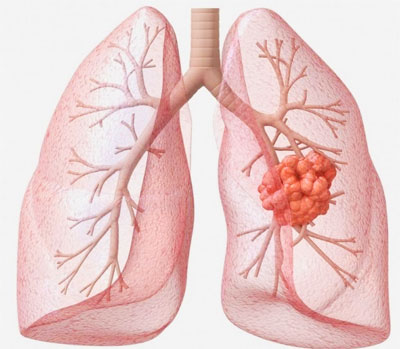Light Therapy Prevails Over Antibiotic Resistance
In the past two decades, many developed countries have seen the rapid emergence of a variety of antibiotic-resistant infectious diseases. Intractable infections such as MRSA and others are manifesting at alarming rates in hospitals across Europe and North America. The tragic result is that increasing numbers of people are dying from infections following surgery. Some strains of bacteria are proving to be extremely resistant, hence the urgent need to identify better ways to kill these lethal bugs.
One of the more challenging infectious diseases is caused by the bacterium called Clostridium difficile, also simply called C. diff. This microbe is part of the normal balance of bacteria living in the human intestines, and most healthy people never experience any problems. But if the balance of intestinal bacteria is disrupted, as occurs with antibiotics, then the C. Diff infection (CDI) may begin to grow out of control. When this occurs, the bacteria start to release toxins that damage the lining of the intestines, resulting in severe diarrhea among other symptoms.
CDI has proved to be a perplexing situation. The reason for this is that antibiotics can excerbate the infection, and yet the usual treatment for this infection is certain antibiotics (metronidazole or vancomycin). Paradoxically, however, if the patient is already taking an antibiotic at the time that the CDI symptoms begin to arise,the usual recommendation is to stop taking the drug. About one in every four patients will show an improvement within a few days of stopping the antibiotic that triggered the CDI.
A Looming Crisis
The main problem with antibiotic treatment for CDI is the efficacy of these drugs is often variable and unreliable. In many cases, the antibiotic treatment does not work due to the bacteria’s development of resistance to the drug. This treatment failures, risk of recurrent infections, and concerns about promoting resistance are the primary motivation behind the search for novel non-antibiotic treatment options.
On a global scale, the numbers of deaths and the costs associated with CDIs are increasing. Metronidazole and vancomycin are the considered to be the only first-line treatment for CDIs; as noted above, however, the treatment failures and recurrences are increasing. Moreover, these antibiotics are expensive. Moreover, the use of antibiotics disrupts the balance of bacteria in the intestines, a major problem with after antibiotic use in general.
Among the effective non-antibiotic approaches to CDI are monoclonal antibodies and fecal transplants. Nevertheless, a new alternative therapy could gain traction in the very near future. That alternative is photodynamic therapy (PDT), discovered over a century ago when certain dyes exposed to visible light led to the killing of various microorganisms.
PDT has been studied primarily as a cancer treatment and only recently began to receive serious attention from scientists as a treatment for infections. Antimicrobial PDT has been studied mostly in the laboratory setting, albeit displaying an impressive ability to kill many different types of disease-causing microbes—including those that seem quite adept at dodging even the best antibiotic “magic bullets”.
Overcoming the Limitations of Antibiotics
Drug resistance has emerged as a serious issue not only in terms of bacterial infections but also with infections involving fungi, parasites, viruses and almost all classes of pathogens. Antimicrobial PDT for infections has shown great promise for overcoming such infections in the laboratoy, although the actual clinical applications thus far remain quite limited. In the majority of clinical applications, the photosensitizer is applied topically to the infection, as is the case with acne, periodontitis, or non-healing ulcers.
Antimicrobial PDT entails the administration of a photoactive dye called a photosensitizer, which tends to accumulate in microbial cells (as well as cancer cells), making them vulnerablee to light. Upon irradiation with a specific wavelength of light (ideally, non-thermal red light), the dye reacts with oxygen to form highly reactive oxygen molecules, which in turn eradicate bacteria as well as fungi, viruses and protozoa.
The recent emergence of antibiotic-resistant CDI and hypervirulent CDI that cause increased morbidity and mortality has made antimicrobial PDT an increasingly attactive option. Nevertheless, there are relatively few studies on the use of antimicrobial PDT for eradicating infections by Clostridium and other aggressive, anaerobic bacteria. Recent studies have shown that PDT may eradicate bacterial infections caused by C. difficile both in the cell culture and in living animals and humans, as reported in the 26 January 2015 issue of Expert Review of Anti-Infective Therapy.
Sources
Choi S, Lee H, Yu J, Chae H. In vitro augmented photodynamic bactericidal activity of tetracycline and chitosan against Clostridium difficile KCTC5009 in the planktonic cultures. J Photochem Photobiol B. 2015 Dec;153:7-12.
Ünal CM. Steinert M. Novel therapeutic strategies for Clostridium difficile infections. Expert Opin Ther Targets. 2015 Nov 13:1-17. [Epub ahead of print]
De Sordi L, Butt MA, Pye H, Kohoutova D, Mosse CA, Yahioglu G, Stamati I, Deonarain M, Battah S, Ready D, Allan E, Mullany P, Lovat LB. Development of Photodynamic Antimicrobial Chemotherapy (PACT) for Clostridium difficile. PLoS One. 2015 Aug 27;10(8):e0135039.



 English
English Français
Français Deutsch
Deutsch Nederlands
Nederlands